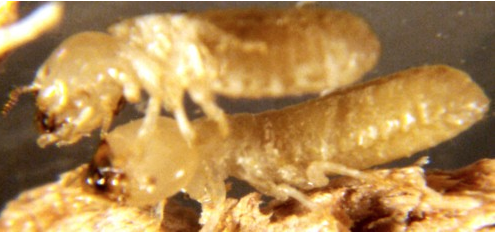Spotting Drywood Termites in Your Home
 When most California homeowners think of termites, they probably think of the highly destructive subterranean termites that silently invade homes from the soil underneath, and that can cause significant damage to their homes.
When most California homeowners think of termites, they probably think of the highly destructive subterranean termites that silently invade homes from the soil underneath, and that can cause significant damage to their homes. How economically significant a pest are termites? According to research from the National Pest Management Association, termites invade approximately 600,000 homes in the United States each year, and property owners spend an estimated $5 billion annually to control termites and repair the damage they cause.
There is, however, another species of termite that doesn’t make the headlines as often as its subterranean relative, but is just as “invisible” and can be just as destructive to your home – the drywood termite.
The drywood termite – unlike its soil-loving cousin – prefers to live above ground in the wood siding, roofing, and wood supports inside structures. Drywood termites will swarm by the hundreds around the exterior of a home in search of an access point to make their entry and start their destructive ways.
Fall is prime drywood termite swarming season, and swarms occur most often on sunny days after a spike in the mercury following cooler temperatures.
What areas of a home are at the greatest risk from drywood termites? In his experience, the Clark Man has noticed the following areas to be most vulnerable to drywood termite infestation:
- Wood molding and framing around windows and doors
- Eaves and overhangs
- Protected joints or crevices in and around doors
- Attics and above-ground crawlspaces
- Wood siding and roofing, especially where shingles and paper-overhang wood meet
A drywood termite is deliberate in its actions, and will excavate a small tunnel into the wood, close it from behind, and then create a chamber it will inhabit for a year or more. These termites can stay dormant for extended periods of time (more than a year) and then re-emerge stronger and hungrier than ever.
Drywood termites are also creatures of habit, and are known to re-infest the exact same place. That is why it is important to have your home regularly inspected by a trained pest management professional who can properly identify the presence of drywood termites:
Here are some signs that drywood termites may be targeting your home:
- Large numbers of flying insects on the exterior (and sometimes on the interior) of your home that are focused on the wood
- Wings on windowsills
- Hollow-sounding or visibly damaged wood that is honeycombed or carved out: If you can easily make a hole with a pocketknife or flat-blade screwdriver in the wood, it might be termite damage
- Unexplained piles of what look like coarse grains of sand (these piles are termite fecal pellets sifted out of wood by the termites)
How do you know for sure if your home has drywood termites? Our highly trained, fully licensed termite inspectors will inspect your home thoroughly, and if treatment is required, will recommend preventative and curative treatments that are backed by our guarantee of 100-percent satisfaction.
Remember, if you suspect your home has a problem with drywood termites, call or text (800) WE-NEED-YOU (936-3339), or drop me an email at clarkcares@clarkpest.com.
Until next time I’m the Clark Man, and thanks for helping me keep unwanted pests out of your home.


